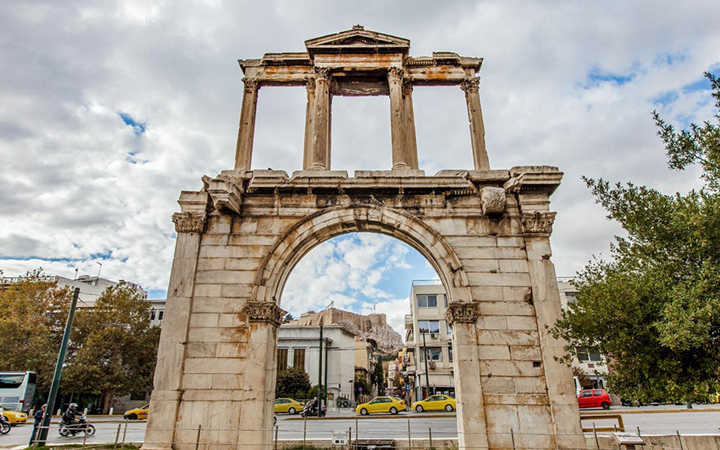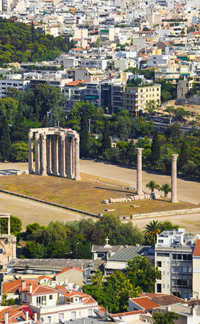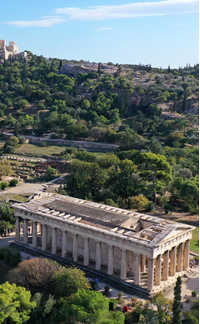Standing proudly between the Temple of Olympian Zeus and the bustling avenues of modern Athens, Hadrian’s Arch is a striking marble gateway that has watched over the city for nearly two thousand years. Erected in 131 AD, the arch was built to honor the Roman Emperor Hadrian, a great admirer and benefactor of Greek culture.
A Symbolic Division
More than just a decorative monument, the arch marked a symbolic boundary between ancient Athens and the new Roman city that Hadrian helped shape. Two inscriptions still visible on the arch highlight this dual identity. One side reads: "This is Athens, the ancient city of Theseus," while the other proclaims: "This is the city of Hadrian, and not of Theseus." It was a bold statement reflecting Hadrian’s significant influence in transforming Athens into a thriving cultural and architectural center of the Roman Empire.
Architecture and Preservation
Built from fine Pentelic marble, the arch stands about 18 meters high, with a single large passageway flanked by Corinthian columns. Unlike typical Roman triumphal arches, it features no military carvings or scenes of conquest, emphasizing Hadrian’s cultural rather than imperial legacy in Athens.
Remarkably well preserved, the arch has survived centuries of change — from Roman glory to Byzantine rule, Ottoman occupation, and the birth of the modern Greek state. Today, it remains a beloved historical landmark, easily accessible on foot and just a short stroll from the Acropolis and Plaka.
Visitor Tips
- Located near Syngrou Avenue, it’s visible from major roads and often included in walking tours.
- Best visited during the day for clear photos or lit beautifully at night.
- Combine your visit with nearby sights like the Temple of Olympian Zeus or the National Gardens.
Hadrian’s Arch is more than an ancient structure — it’s a timeless reminder of Athens’ layered history and the enduring influence of those who helped shape it.


















